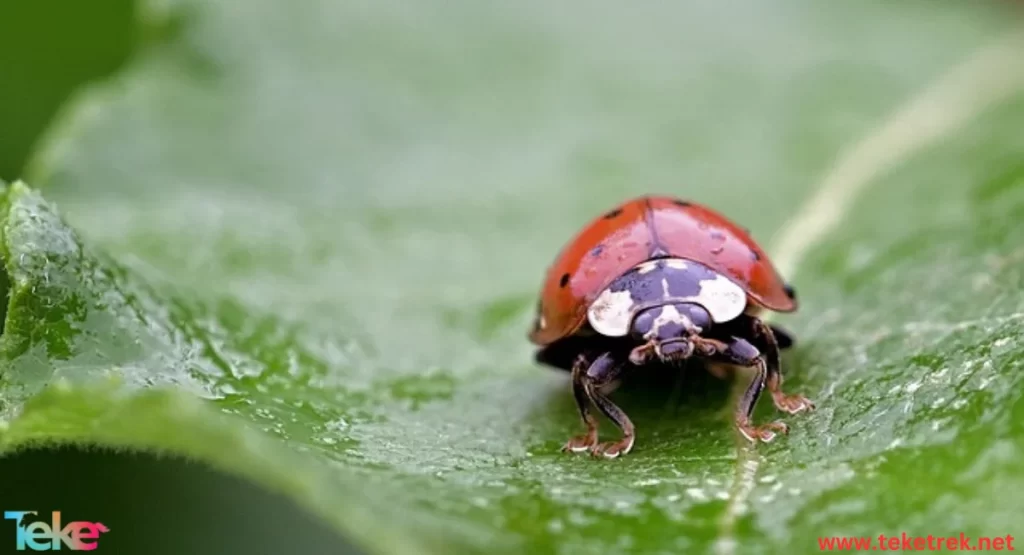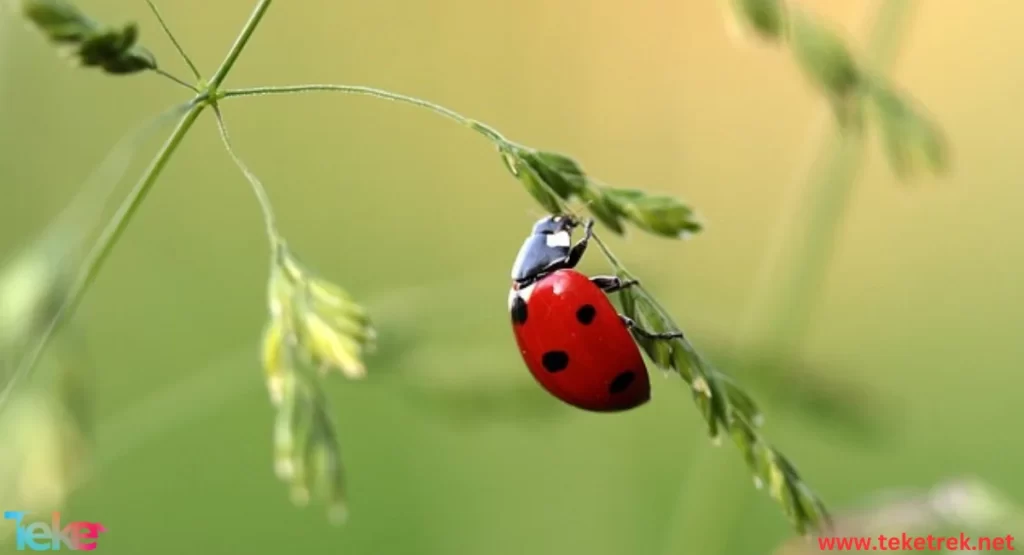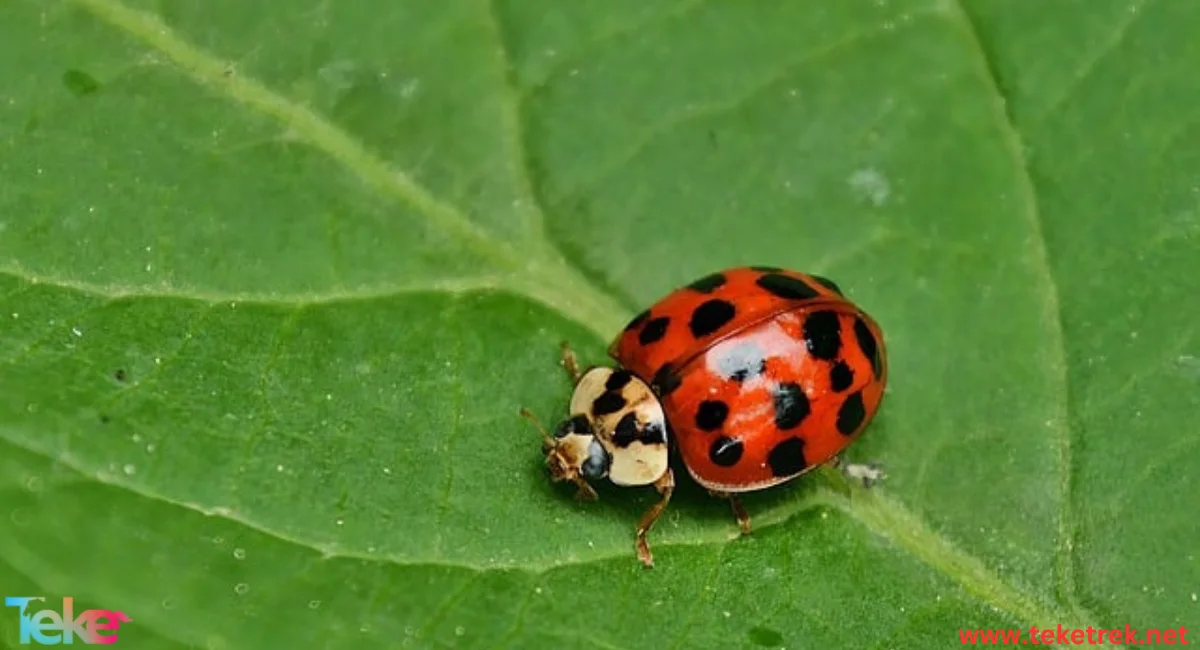The Coccinellidae is considered one of the small, highly important insects. It lives on plants and eliminates insects that destroy agricultural crops. Which makes it play an important and effective role in environmental and biological balance.
Coccinellidae’s belong to the family of beetles, which are distinguished by their small size and are famous for their bright colors and beautiful patterns, which are often red with black dots. In addition to its ability to lay hundreds of eggs together and create an integrated colony within a short time.
In this article on TekeTrek Website, we will explore more information about this important insect, as we will inform you of its preferred environment, habitats, species, and other information that you must be looking for.
About the ladybug
Ladybugs, ladybugs, or ladybugs are a type of insect that spreads throughout the world and includes more than 5,000 species.
Its formal characteristics
- It is distinguished by its small size compared to the rest of its family, as its length ranges from 1 to 8 thousandths (less than 1 cm).
- Their colors range from red to yellow, dark white and blackish grey, with black or orange spots on their wings.
- You have a strong immune system.
- It has an antenna that it uses mainly for smelling, especially during mating times, in addition to its role in sensing the surrounding environment.
- It has a canine-shaped mouth, the upper jaw is larger than the lower jaw, which is suitable for biting food.
- It has a pair of eyes, each eye detailed in the form of small, compound eyes.
- It has 6 articulated legs.
- It has two scaly wings, and when flying, its wings release from the membrane outward.
- It has an abdomen in the form of a pectoral shield that includes several rings from the bottom to the opening of the reproductive organ.
Types of ladybugs
- Seven-spotted ladybug.
- European red ladybug.
- Great African ladybug.


Mating
- Coccinellidaes mate in the summer or spring.
- It lays 3-300 eggs depending on its type.
- The female of the British species lays eggs that hatch within 5 to 8 days.
- The life cycle lasts from 4 to 7 weeks.
- Its average life expectancy is 2 to 3 years.
Coccinellidae’s benefits for the ecosystem and biodiversity
Here are 10 of the benefits of ladybugs for humans and the ecosystem:
- Pest control: Ladybugs feed on harmful insects that attack crops, which helps preserve agricultural plants, as they feed on many insects that are harmful to crops, such as harmful vermin and aphids.
- Enhancing biodiversity: Ladybugs are considered part of the biodiversity in the ecosystem and contribute to its balance.
- Improving soil quality: Ladybugs can help improve soil quality by decomposing organic matter.
- Providing food for birds: Coccinellidae’s are a food source for predatory birds that depend on insects as part of their diet.
- Improving water quality: Ladybugs can contribute to improving water quality through their contribution to maintaining the biological balance in swamps and ponds.
- A source for scientific research: Scientists uses Coccinellidae’s in scientific research to understand their behavior and their impact on the environment.
- Promoting environmental balance: The ladybug can contribute to environmental balance through its role in the food chain and interactions between living organisms.
- Stimulating creativity and innovation: The ladybug may be a source of inspiration for artists, writers, and designers to create works of art inspired by it.
- A symbol of good luck: The ladybug is considered a symbol of good luck in some cultures, making it popular in designs and decorations as a symbol of luck and protection.
Strange and impressive facts about ladybugs
- Ladybugs have the ability to spread their wings and become closer to the ground when they feel threatened or in danger.
- Ladybugs have flight joints, which allow them to fly when needed.
- Some species of ladybugs are able to release powerful liquids at potential enemies to defend themselves.
- A ladybug can live for up to two years, which is a long time for a small insect.
- There are more than 5,000 different types of ladybugs around the world, and they vary in colors, sizes, and shapes.
- Some types of ladybugs have the ability to secrete naphthalene to defend themselves, which acts as a food deterrent for insects and fungi.
- Some types of ladybugs are distinguished by their ability to change their body color to camouflage themselves with the surrounding environment, which helps them remain invisible to enemies.
- A ladybug can eat an amount of food up to twice its weight in one day.
- Some types of ladybugs live in the soil and are called “soil ladybugs” and spend most of their time underground.
- Some types of ladybugs have the ability to produce hemolymph in, a substance that stabilizes the blood and contributes to recovery from injuries.
Benefits of ladybugs as food for humans
Ladybugs have many health and nutritional benefits, including:
- It contains large amounts of proteins that help build and renew tissues in the body.
- A good source of calcium, as it contains abundant amounts of calcium necessary for healthy bones and teeth.
- Rich in essential fatty acids such as omega 3, which are beneficial for cardiovascular health.
- Improves digestive health and enhances digestion.
- It improves skin health and helps get rid of skin problems.
- A good source of vitamins and minerals that are beneficial for body health.
- Ladybugs are low in calories, making them a healthy choice for those who want to lose weight.
- Improving brain functions and strengthening memory.
- Ladybugs contain a small amount of saturated fat, making them a healthy choice for people who want to reduce their consumption of saturated fat.


Necessary foods for ladybugs
- Coccinellidae’s feed mainly on small, harmful insects, such as bugs, larvae, and spiders. In addition, ladybugs can also feed on some plants and fruits. Of which:
- Plant leaves: Ladybugs may feed on plant leaves sometimes, especially if they need water or nutrients found in the plants.
- Fruits: Ladybugs can feed on some variegated fruits such as strawberries or grapes.
- Grains: Ladybugs may consume some types of small grains as part of their diet.
- It should be noted that ladybugs are primarily insect pests and feed on harmful insects, and the above foods are not a major part of their diet.
Smart Defense Strategies of the Ladybug
The ladybug is a clever insect that uses various defensive strategies to protect itself from predators and ensure its survival. God has endowed it with the ability to hide and release colors and fluids that may be toxic to many predators. Some of the smart tactics the ladybug uses against its enemies include:
- Using colors to signal toxicity: Ladybugs often have bright colors, such as red and black, which serve as warning signs to predators that they are toxic or unpalatable.
- Releasing toxic fluid: When threatened, the ladybug secretes a toxic fluid from its joints that is harmful to predators.
- Camouflage: It can avoid predators by mimicking the colors and shapes of its surroundings.
- Quick movement: When it feels threatened, the ladybug moves quickly, making it difficult for predators to catch it.
Do Ladybugs Have Insect Intelligence?
Let’s take a look at the ladybug’s behavior and how complex it is, and whether it can be considered a form of “instinctive intelligence.”
Yes, the ladybug has insect intelligence — an instinctive type of intelligence that enables it to adapt to its environment and respond to threats for survival. Examples include:
- Adapting to the environment: Ladybugs can change their behavior in response to weather changes or food availability.
- Responding to threats: They release unpalatable chemical fluids or change their color.
- Communication: Ladybugs can communicate with each other using chemical or sound signals.
- Preying on pests: They hunt small insects like aphids using speed and agility.
- Recognizing enemies: They can identify natural enemies like birds or spiders and avoid them.
- Diet flexibility: Ladybugs can adapt to different food sources, like aphids or pollen.
Ladybug in Cultures and Myths
The ladybug is a beloved insect in many cultures and myths around the world and is associated with various symbolic meanings. Some examples:
- Some times, the ladybug symbols to good luck and prosperity.
- It is also considered a symbol of love and marriage — seeing one is believed to bring love and happiness.
- Associated with nature and fertility, as it feeds on insects that harm plants.
- In some European myths, the ladybug is a symbol of ancient goddesses tied to nature and fertility.
- In folk tales, the ladybug is portrayed as a charming and cheerful character, often linked to good fortune.
- In European culture, it represents good luck and prosperity and is commonly associated with nature and fertility.
- In some Asian cultures, it is a symbol of love and marriage, often linked to happiness and prosperity.
Ladybug in the Lab: What Do Scientists Learn?
The ladybug is used as a model to study immunity and adaptation in modern scientific research and has even inspired the creation of tiny robots. Some examples include:
- Scientists study how immunity evolves in ladybugs and how that knowledge can apply to other diseases.
- Research is being done on how ladybugs respond to infection, to better understand immunity in living organisms.
- Studies explore how ladybugs adapt to their environment, like changing color for camouflage or releasing toxins for defense.
- Doctors have extracted antimicrobial treatments from ladybugs.
- Scientists study how ladybugs develop defensive mechanisms to avoid predators.
- Ladybugs are used as models for designing small robots that can move and interact with their surroundings.
- Research also explores how the movement and adaptability of ladybugs can be applied to robot design.
- Natural dyes produced by ladybugs have been used in many industrial colorants.
From Nature to Technology: How the Ladybug Inspired Innovation
The ladybug has inspired innovations across various fields such as technology, medicine, and industry. Some examples:
- Inspired the design of small robots that can move and interact with the environment.
- Helped in the development of sensors and detectors capable of identifying chemical or biological substances.
- In some cultures, ladybugs were used in traditional medicine, for skin disease treatments.
- Inspired the search for new drugs, such as antimicrobial medications.
- Influenced industrial product design, including electronics, machines, and new materials like water-resistant substances.
How to Raise Ladybugs at Home or in the Garden
A simple guide for nature and eco-friendly gardening lovers on how to raise and care for ladybugs.
Raising ladybugs at home or in the garden can be a fun and beneficial experience. They are beautiful insects and provide many advantages. Here are some tips:
Raising Ladybugs at Home:
- Ladybugs feed on small insects such as: aphids and larvae. Provide them with food by growing plants they feed on indoors.
- They need a safe shelter, which can be a box or container with ventilation holes.
- They require regular care, such as cleaning the shelter and providing food and water.
Raising Ladybugs in the Garden:
- Growing plants in the garden supports ladybugs by feeding them with pests living on plants. Choose flowers that attract ladybugs.
- Provide a safe shelter in the garden using a ventilated container.
- Avoid using pesticides, as they can harm ladybugs.
Benefits: Raising ladybugs helps control pests that harm plants, and it can be a fun and engaging activity.
FAQs about ladybugs
- How does a ladybug fight other insects?
Its body fluid contains a powerful antibiotic called harmonic in addition to peptides with antimicrobial action, which gives the insect greater ability and effectiveness compared to native insects.
- What does a ladybug do in the cold?
In the cold, it resorts to hibernation, and chooses its refuge under flower leaves, under stones, under tree bark, and in old trunks.
- What is the classification of ladybugs?
Ladybugs are a class of insects in the Ladybug family of the beetle order.
- Do ladybugs drink water?
Yes, the Coccinellidae drinks the water droplets condensing on its back through its vapors in the air.
- How many legs does a ladybug have?
Ladybugs have 6 jointed legs.
- Can ladybugs fly?
Yes, they are capable of flight.
- what ladybugs eat?
they like to feast on teeny sap-sucking insects or aphids.
- How long ladybugs live?
Coccinellidae can live up to 1 year.
In fact, it can be said that the Coccinellidae is a vital and important organism in the ecosystem, providing many benefits to humans and the environment. We must all care about protecting and preserving these small creatures, through awareness of their importance in enhancing environmental balance. Let us preserve the beauty and usefulness of the ladybug in our natural world and preserve its diversity and importance in our current era.






